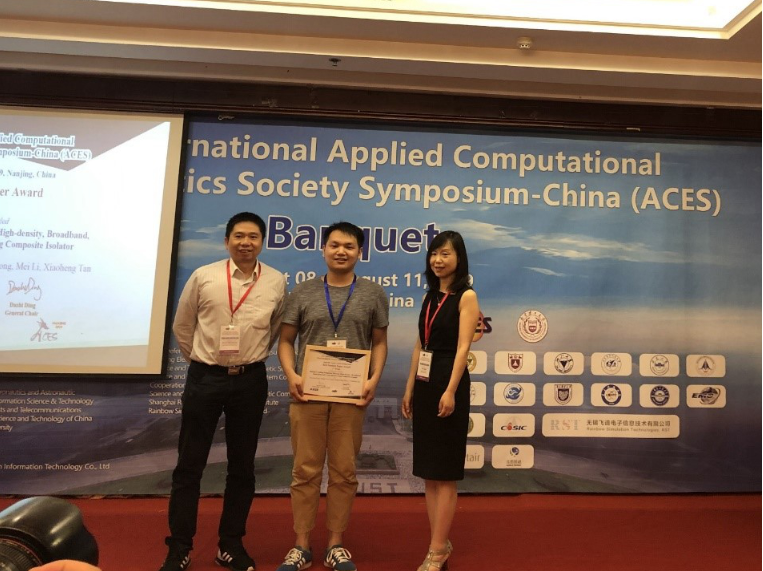From August 9 to 11, 2019, IEEE International Applied Computational Electromagnetics Society (ACES) Symposium was being held in Nanjing as scheduled. ACES was founded 34 years ago and is present one of the globally largest societies specialized in computational electromagnetics with the greatest influence. ACES has its own ACES journals (SCI indexed) and ACES Symposium (EI indexed) and is headquartered in California, the USA. As a global grand event in the area of applied computational electromagnetics, IEEE ACES serves as an exchange platform for experts and scholars in the international microwave electromagnetics area to exchange ideas on latest development of research of radio propagation, computational electromagnetics, and antenna theory and technologies. The Symposium was sponsored by ACES and Nanjing University of Science and Technology and co-organized by more than 10 reputable universities, research institutes and enterprises of China, and attended by world well-known scholars including Academician Jin Yaqiu of Fudan University. CQU delegation also attended the Symposium as led by Professor Tang Chunming from the School of Microelectronics and Communication Engineering, a winner of the Outstanding Youth Science Foundation under the National Natural Science Foundation.
After recommendation and selection of the Awards Committee of the Symposium, the team led by Ms. Li Mei won the Young Scientist Award Scheme. The research areas of Li Mei include reconfigurable antenna, phased-array antenna and meta-surface, and she has published nearly 50 academic papers in mainstream academic journals and important conferences of related areas. Li Mei serves as a reviewer of many journals, including IEEE Transactions on Antennas and Propagation, IEEE Transactions on Industrial Electronics, International Journal of Electronics and Communications, and The Applied Computational Electromagnetic Society Journal. She has directed projects like the youth projects supported by the National Natural Science Foundation and projects supported by the Technical Innovation and Application Development Foundation of Chongqing. She has applied for more than 10 patents for invention of China.

Furthermore, the paper titled Mutual Coupling Reduction between High-density, Broadband, Dual-polarized Cross-dipoles Using Composite Isolator by Sun Xiaoshuai, a second-year postgraduate student of the team, was selected as one of the 30 finalists for Best Student Paper Award Competition after several rounds of selection by the Awards Committee. After tense defense and onsite poster representations, the project was highly recognized and affirmed by the Defense Committee, and was awarded the Best Student Paper Award 1st Prize. Professor Kwok Wa LEUNG from Hong Kong University, the former editor in chief of IEEE T-AP and an IEEE Fellow, and Professor Dan Jiao from the Purdue University, an IEEE Fellow, presented him with the certificate and congratulated on his winning the award.
The paper described a compound isolator that was applicable to the broadband dual polarization high density base station antenna array. The compound isolator had a simple structure and was easily processed. It was able to lower the coupling between dual polarized antenna bays within the broadband, without increasing the overall section height of the antenna. The research group led by Professor Tang Mingchun started to carry out continuous theoretical and experimental research of high-density antenna array in 2015. After four years of hardworking, the research group managed to sole key difficult problems like active standing wave deterioration, efficiency reduction and deformation of directional diagram facing the large-scale MIMO antenna array used for the 5G base station communication.
